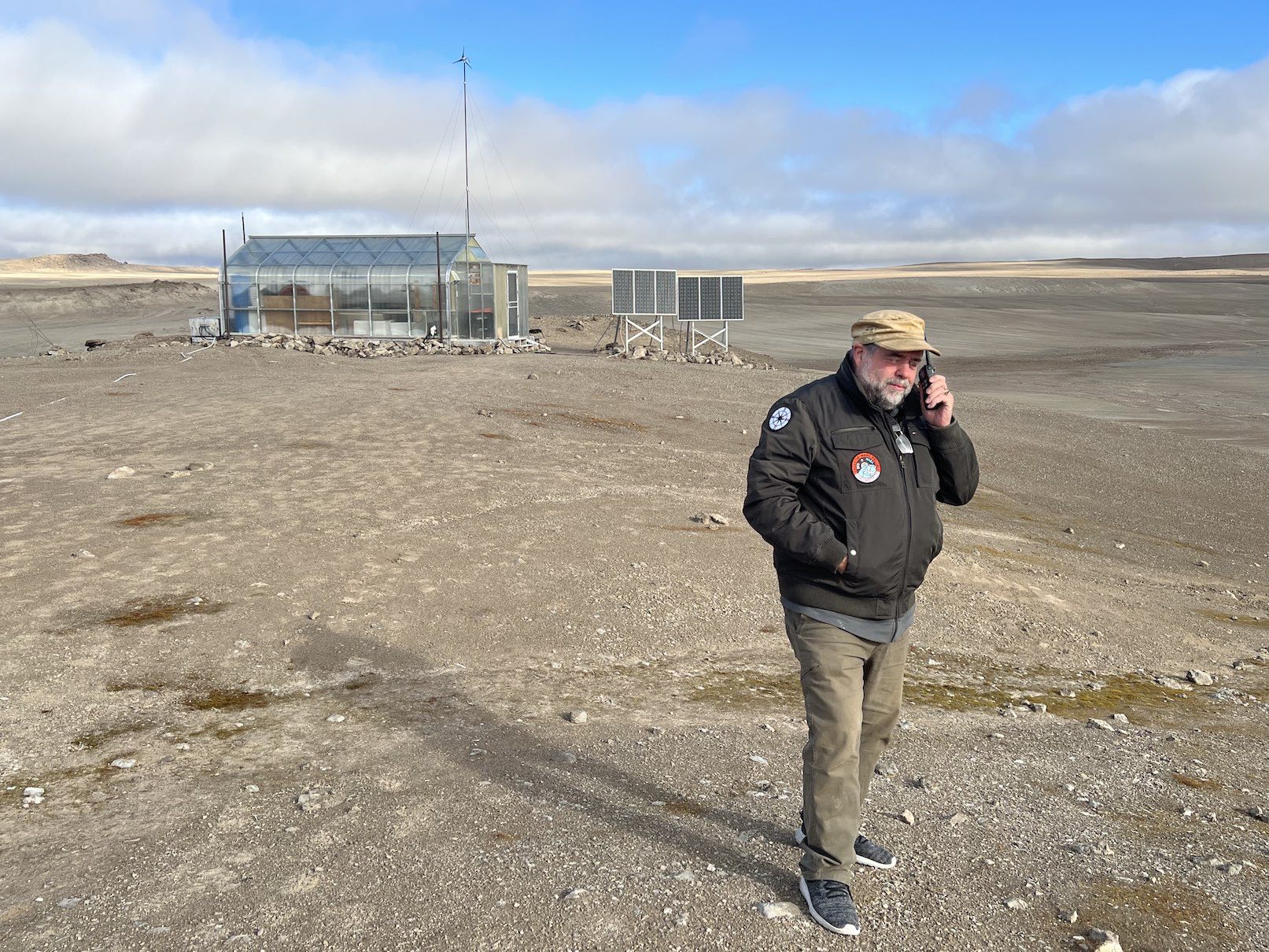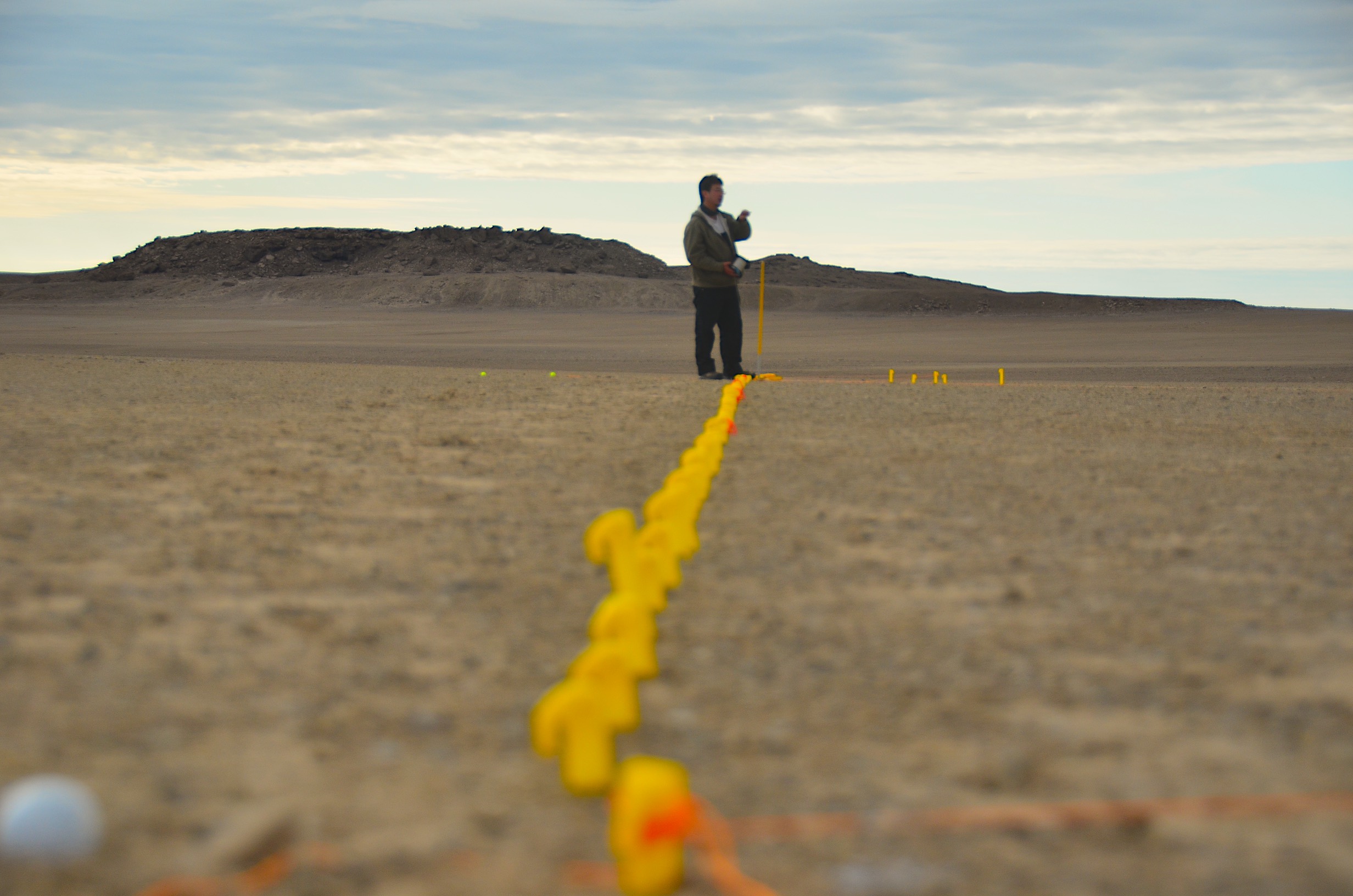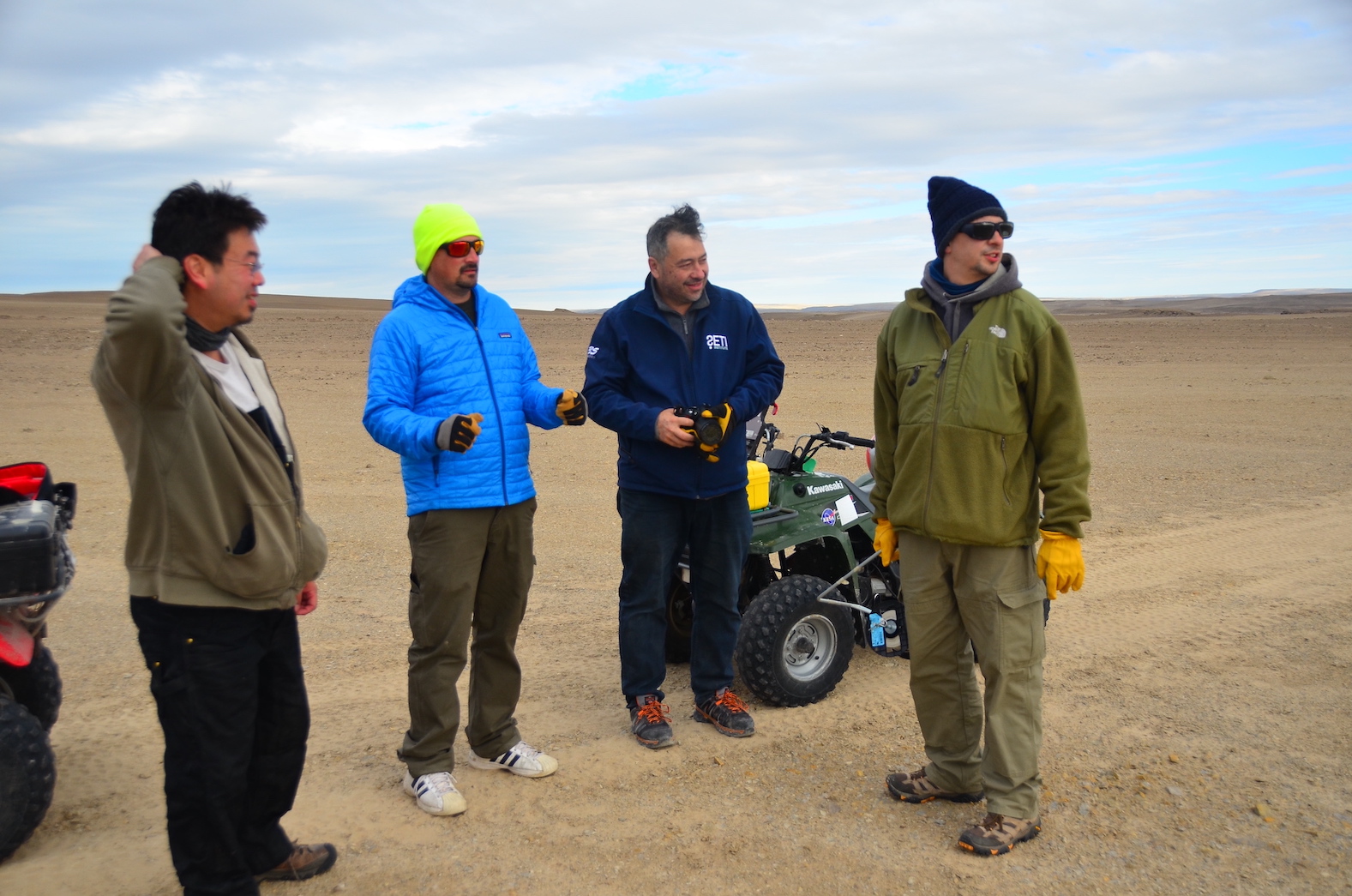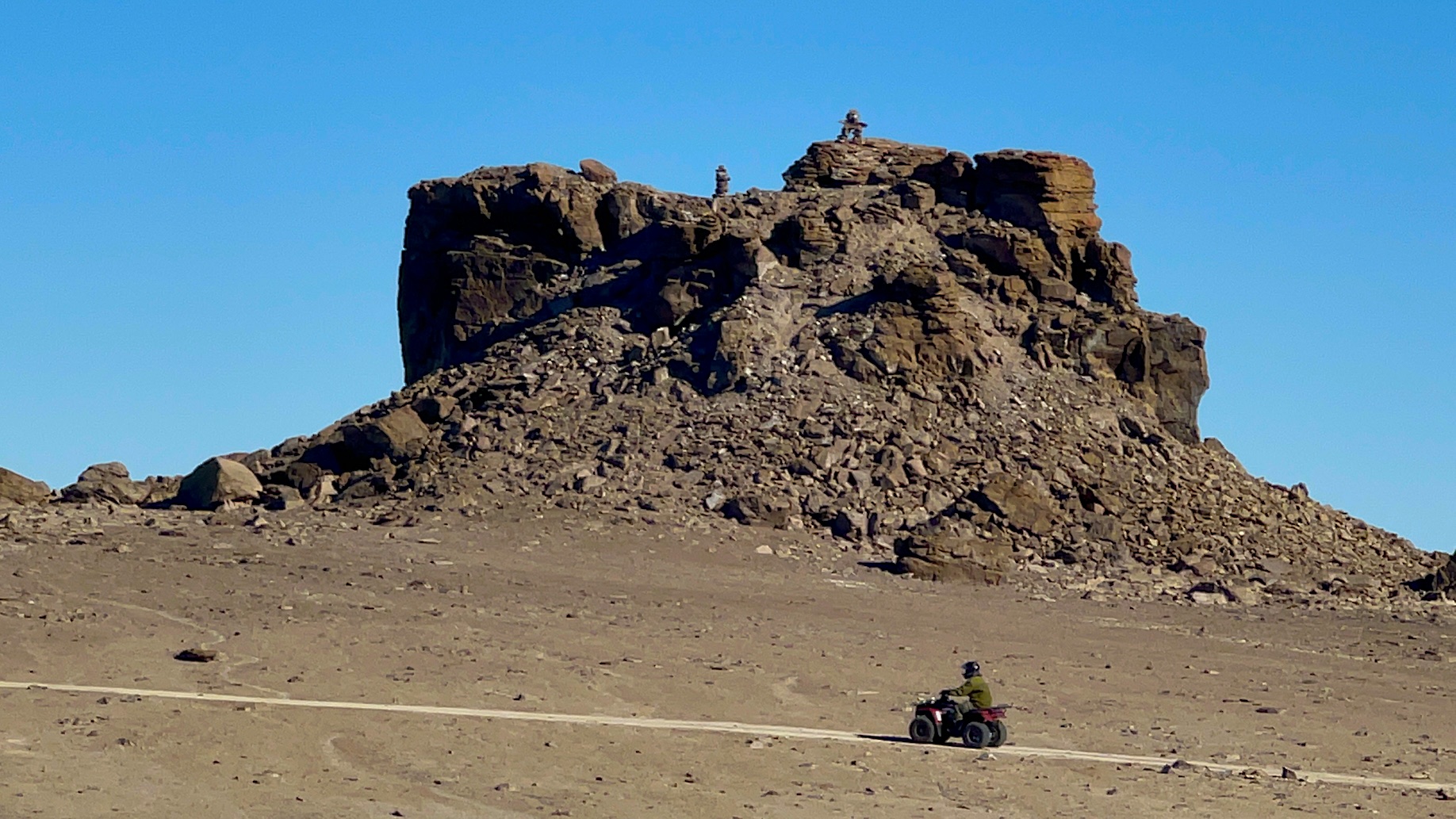It’s our first full day at camp at the Haughton-Mars Project (HMP) site on Devon Island.
With eight team members spread across four structures, the night was comfortable so long as one had either a high noise tolerance or earplugs to defend against the snorers. (A group to which I, apparently, belong, though it was termed as “mild.”) I stayed up late conferring with Pascal about overall plans for the season and more general space matters — we’ve known each other for years and are generally of a mind when it comes to the exploration of the solar system.
After a breakfast filled with meandering conversations, we prepared for the morning briefing. The team is still getting acquainted — though the gents from Haystack Observatory obviously know one another, the rest of us are still getting our social bearings. As breakfast evolved from hearty camp fare to coffee and tea, Pascal outlined the day’s activities. We relocated to the operations tent for a safety briefing on how to react if one or more of us encounter a polar bear, a not-infrequent occurrence in the area.
Sadly, as the northern sea-ice retreats, the bears are becoming more desperate for food and human-bear encounters are on the rise. Awareness is the watchword, and any bear sighting should be followed by retreat and the absolute minimal use of force. That said, a shotgun is always close at hand on field excursions, loaded first with flash-bang blanks designed to deter, then lethal rounds as a final measure. Pascal’s Australian Cattle Dog, named Apollo, should provide early warning.
Related: A month on ‘Mars’: Traveling to the Red Planet
Rod Pyle is a space historian and author who has created and offered executive leadership and innovation training at NASA’s Johnson Space Center. Rod has received endorsements and recognition from the outgoing Deputy Director of NASA, Johnson Space Center’s Chief Knowledge Officer for his work.
The first half of our day will focus on finding a site to deploy the Haystack Observatory’s experiment, called EDGES (Experiment to Detect the Global Epoch of re-ionization Signature). In broad terms, the team is doing field work with MIT’s Dr. Alan E.E. Rogers, seeking to validate earlier results of an experiment that measured the ionization of hydrogen in the early universe. They hope to accomplish this by using passive radio astronomy to listen to some of the earliest radio frequency signals in the universe — emissions from primordial hydrogen. By measuring a small variation in the signal strength against the noise of the galactic foreground they hope confirm measurements made at the Murchison Radio Observatory (MRO) in Australia. To do so will require stretching 5.5 miles (9 kilometers) of wire into a grid pattern, by hand, across absolutely flat land. And not just flat, but level. And not just level, but in a zone of relative radio silence in the FM band, which is one of the busiest radio frequencies on Earth. That’s why they are here in this high Arctic outpost, to find the least radio frequency-polluted region they can.

Upon our arrival yesterday, we pulled out the many all-terrain vehicles (ATVs) on-site; a few started right up but others need some attention after three years of sitting unattended. Add to that the effects of a harsh polar desert environment, and some loving care is needed. For today, the first scout of a candidate site for the EDGES experiment will be undertaken on foot while a few of us stay back to fetch drinking water from a nearby pond (crystal-clear snow melt), set up the medical tent, generally organize, and prep the ATVs. In the afternoon we will take the ATVs out to begin setting up the EDGES antenna assembly.

Working at camp with me are John Schutt, Pascal’s long-time associate in the Haughton-Mars Project, and Sawan Dalal, a 4th-year medical student who is acting as our field safety officer. John has been working in the polar regions since the 1970s, spending his winters on the Antarctic plateau, working with groups of scientists to identify and collect meteorites. He’s a true “polar hand” and looks the part — a 70+ year old man who looks 60 and moves with the energy and purpose that would shame most men in their 30s. He’s not what you might call garrulous; in fact, he answers most queries with the habitual economy of a man used to great stretches of time in the wilderness with the howling wind as his sole companion, but he’s tirelessly helpful, will answer any outdoors-oriented question with sound advice, is a fabulous breakfast chef, and is clearly devoted to Pascal’s project on Devon Island. You can’t wander around camp without seeing John tending to one need or another, and I’m becoming convinced that if he didn’t find something broken, he might break it to have a reason to fix it.

Sawan is a lean man in his mid-20s completing his work at the Baylor College of Medicine who will soon move into his residency. While not a fully licensed M.D. yet, he intends to specialize in emergency and aerospace medicine. His experience could be invaluable in first aid in the field — we are, after all, at least eight hours by emergency airlift from the nearest trauma center, and that of course depends on cooperative weather. Sawan is armed with a ready smile and a kind, forgiving attitude. He’s also in perfect physical condition, an inveterate athlete and outdoorsman, and is clearly a habitual overachiever. He was the recipient of last year’s Haughton-Mars Project Apollo Fellowship, when the project deployed to Oregon instead of the Arctic due to COVID travel restrictions. Sawan has carefully collected medical data on all of us and, as is the case with the best of his profession, offers advice without admonishment. Wherever he ends up in his professional life, I want him as my doctor.

Around noon the team scouting a location for the EDGES experiment returned led by Pascal. On their scouting hike across the hilly, dun-covered terrain, they found a couple of promising sites. These will need to be surveyed more completely to assure their suitability for the EDGES experiment, but that can wait for the ATVs to be ready to transport people and equipment. For the remainder of the day we are organizing camp, tending to personal chores, and enjoying the magnificent desolation (to borrow a term from Buzz Aldrin’s apt description of the moon) that surrounds us.
Follow us on Twitter @Spacedotcom (opens in new tab) or on Facebook (opens in new tab).

